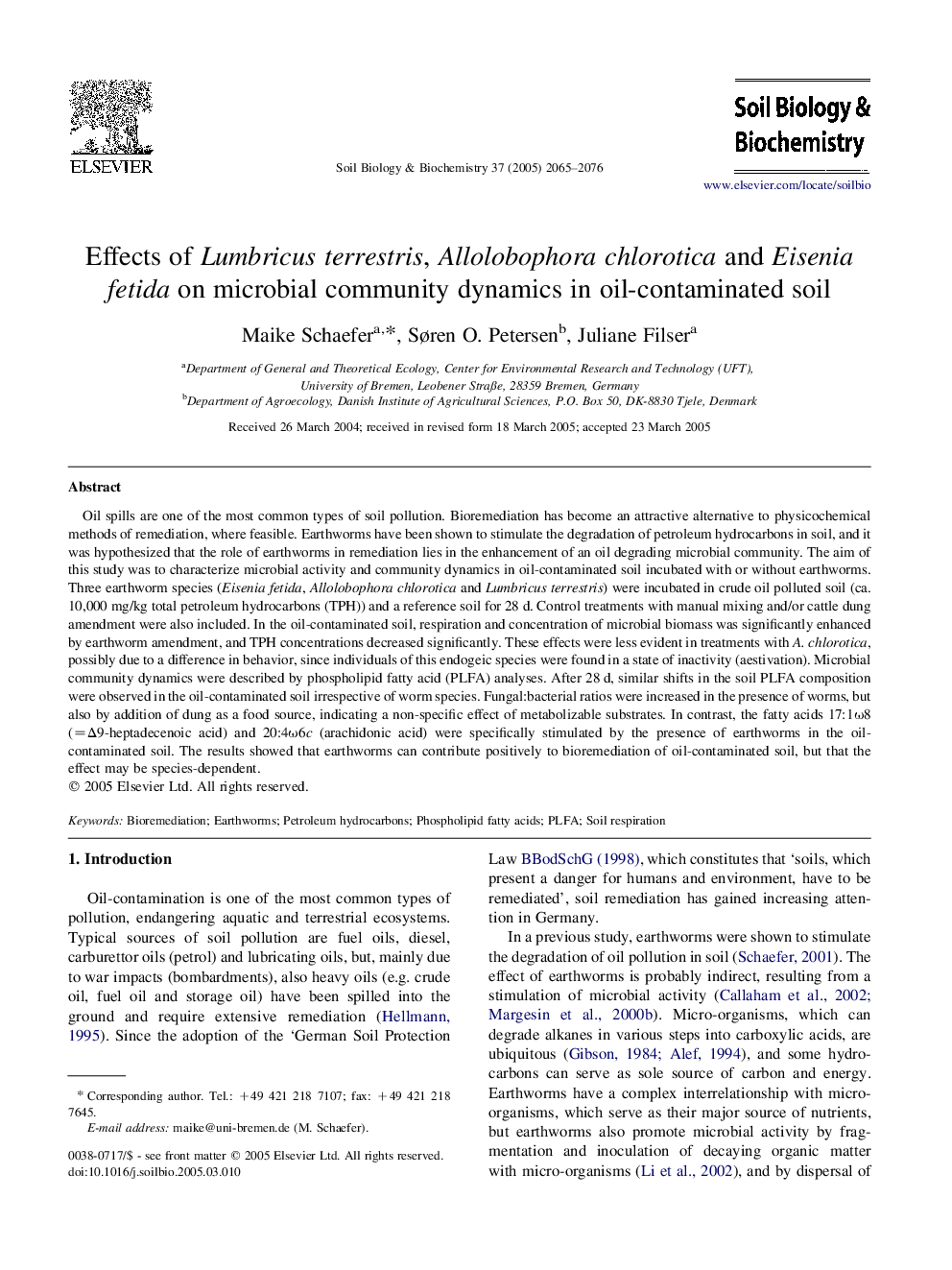| کد مقاله | کد نشریه | سال انتشار | مقاله انگلیسی | نسخه تمام متن |
|---|---|---|---|---|
| 2027251 | 1070101 | 2005 | 12 صفحه PDF | دانلود رایگان |

Oil spills are one of the most common types of soil pollution. Bioremediation has become an attractive alternative to physicochemical methods of remediation, where feasible. Earthworms have been shown to stimulate the degradation of petroleum hydrocarbons in soil, and it was hypothesized that the role of earthworms in remediation lies in the enhancement of an oil degrading microbial community. The aim of this study was to characterize microbial activity and community dynamics in oil-contaminated soil incubated with or without earthworms. Three earthworm species (Eisenia fetida, Allolobophora chlorotica and Lumbricus terrestris) were incubated in crude oil polluted soil (ca. 10,000 mg/kg total petroleum hydrocarbons (TPH)) and a reference soil for 28 d. Control treatments with manual mixing and/or cattle dung amendment were also included. In the oil-contaminated soil, respiration and concentration of microbial biomass was significantly enhanced by earthworm amendment, and TPH concentrations decreased significantly. These effects were less evident in treatments with A. chlorotica, possibly due to a difference in behavior, since individuals of this endogeic species were found in a state of inactivity (aestivation). Microbial community dynamics were described by phospholipid fatty acid (PLFA) analyses. After 28 d, similar shifts in the soil PLFA composition were observed in the oil-contaminated soil irrespective of worm species. Fungal:bacterial ratios were increased in the presence of worms, but also by addition of dung as a food source, indicating a non-specific effect of metabolizable substrates. In contrast, the fatty acids 17:1ω8 (=Δ9-heptadecenoic acid) and 20:4ω6c (arachidonic acid) were specifically stimulated by the presence of earthworms in the oil-contaminated soil. The results showed that earthworms can contribute positively to bioremediation of oil-contaminated soil, but that the effect may be species-dependent.
Journal: Soil Biology and Biochemistry - Volume 37, Issue 11, November 2005, Pages 2065–2076